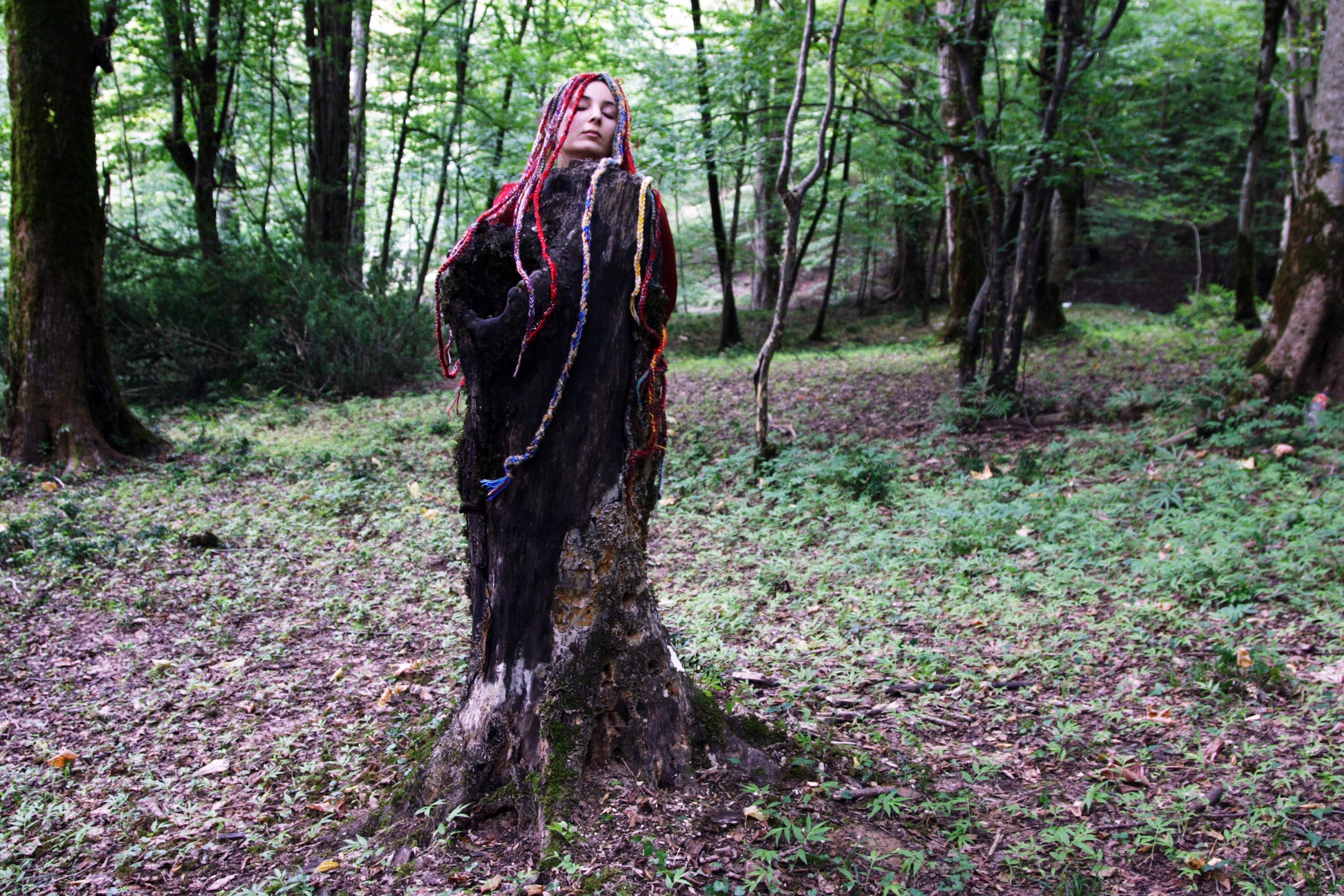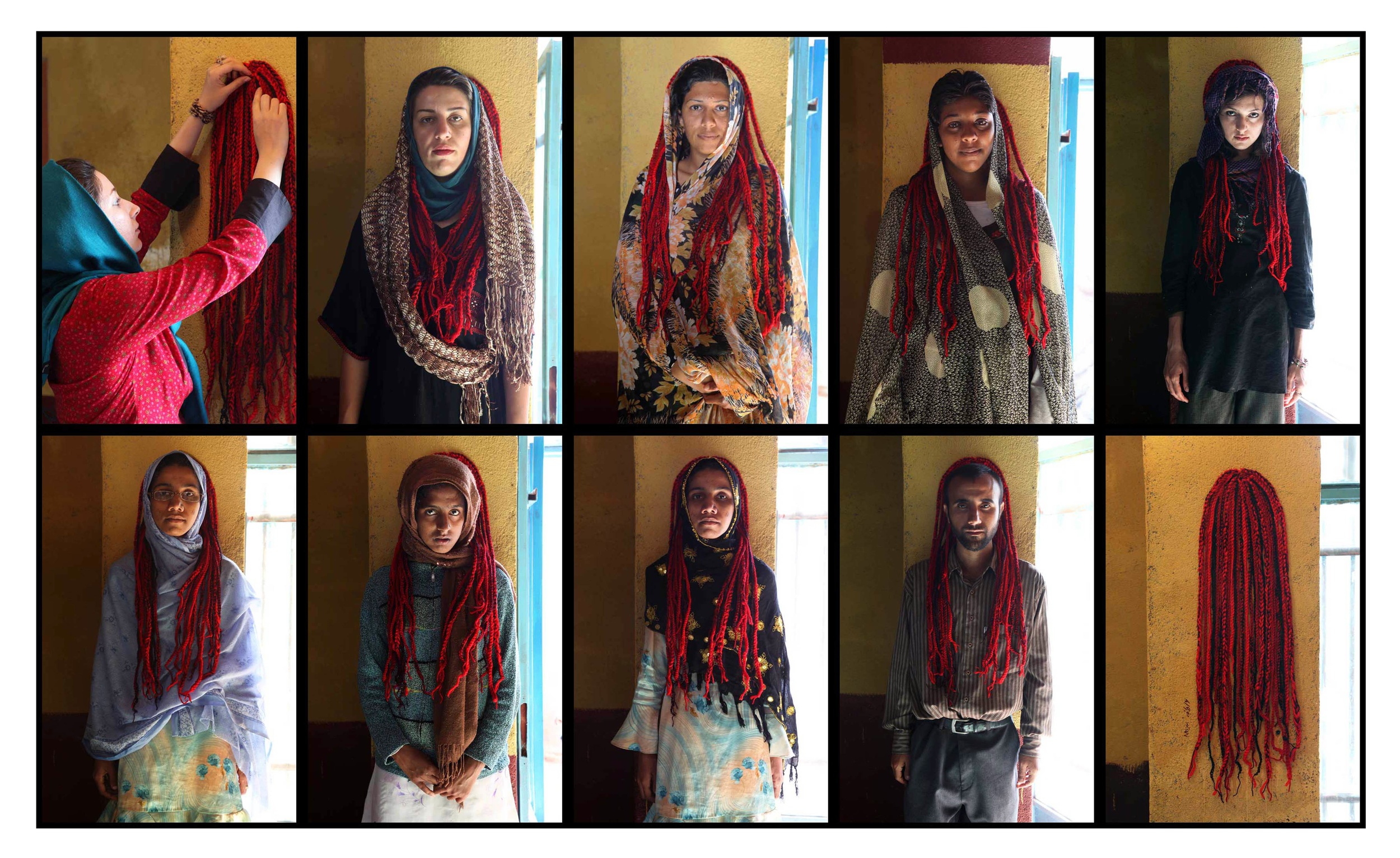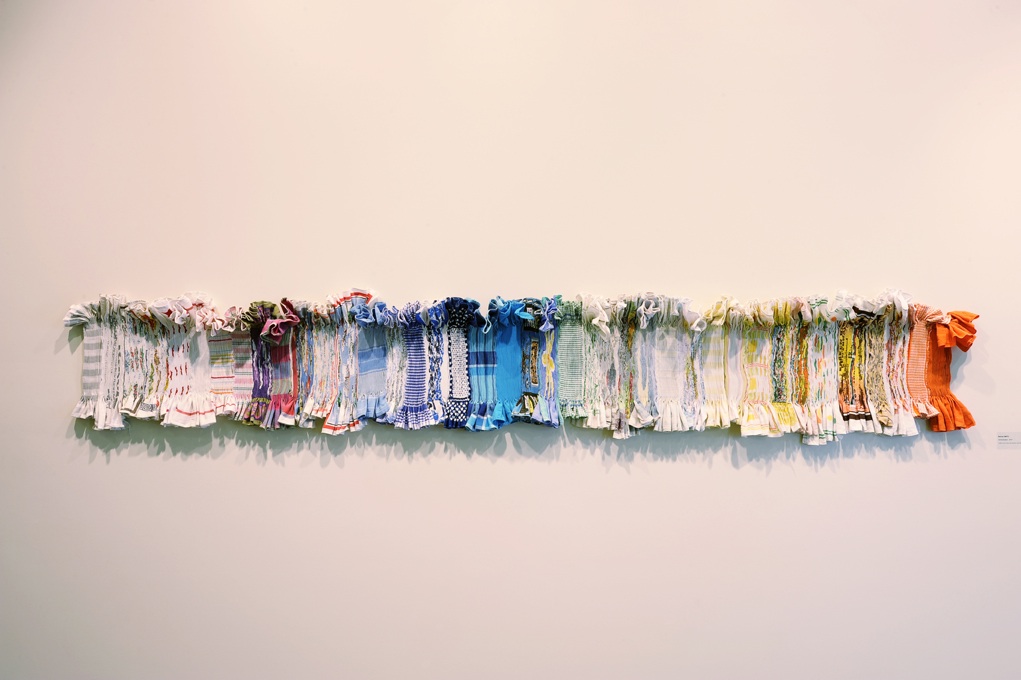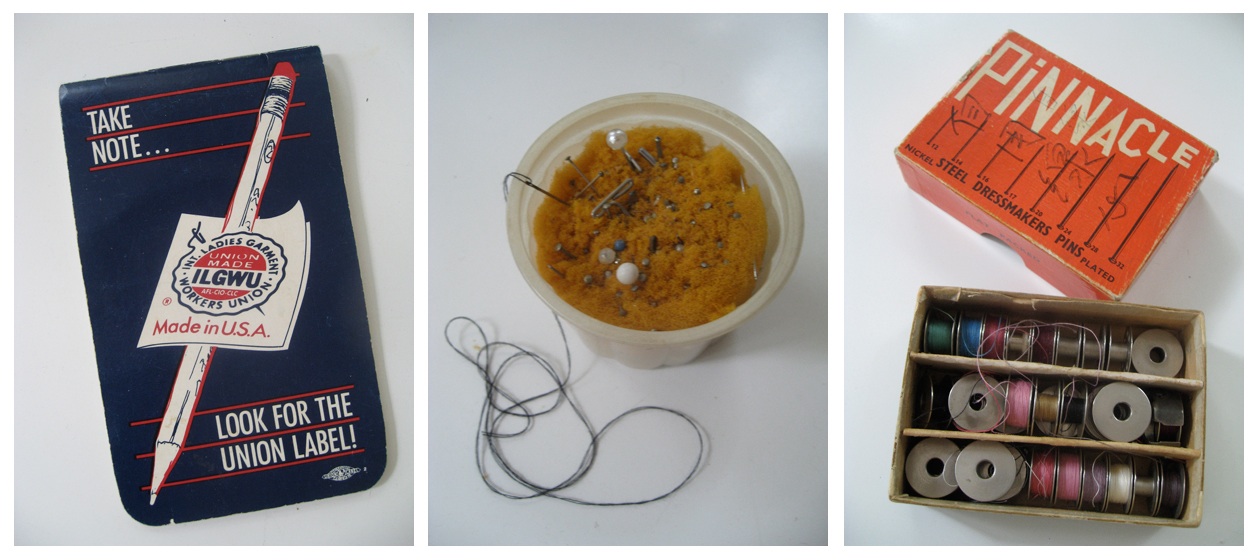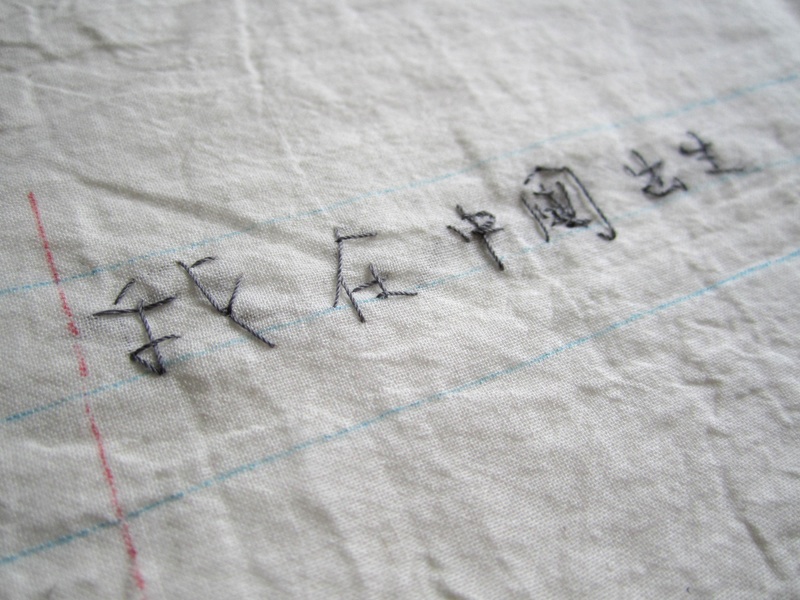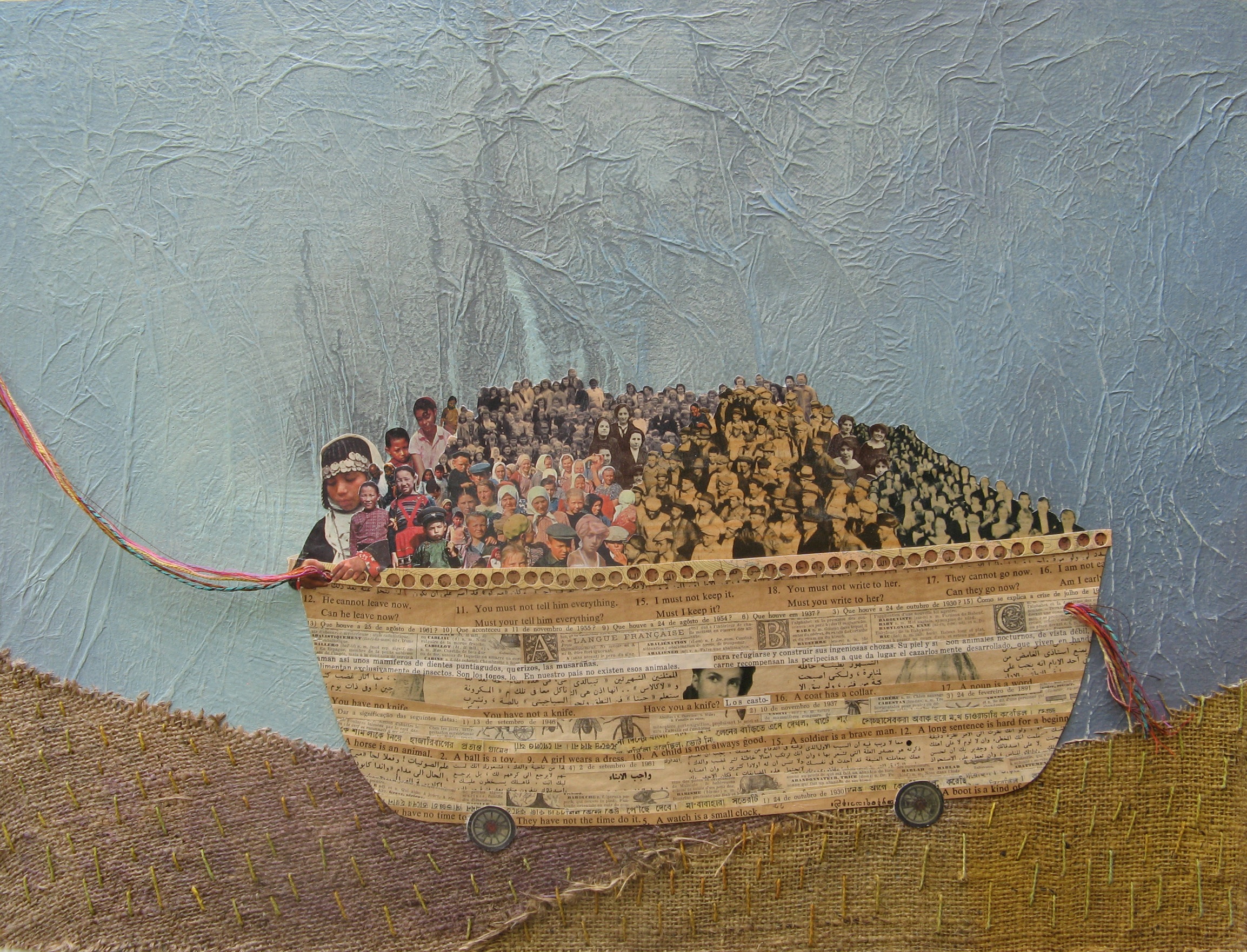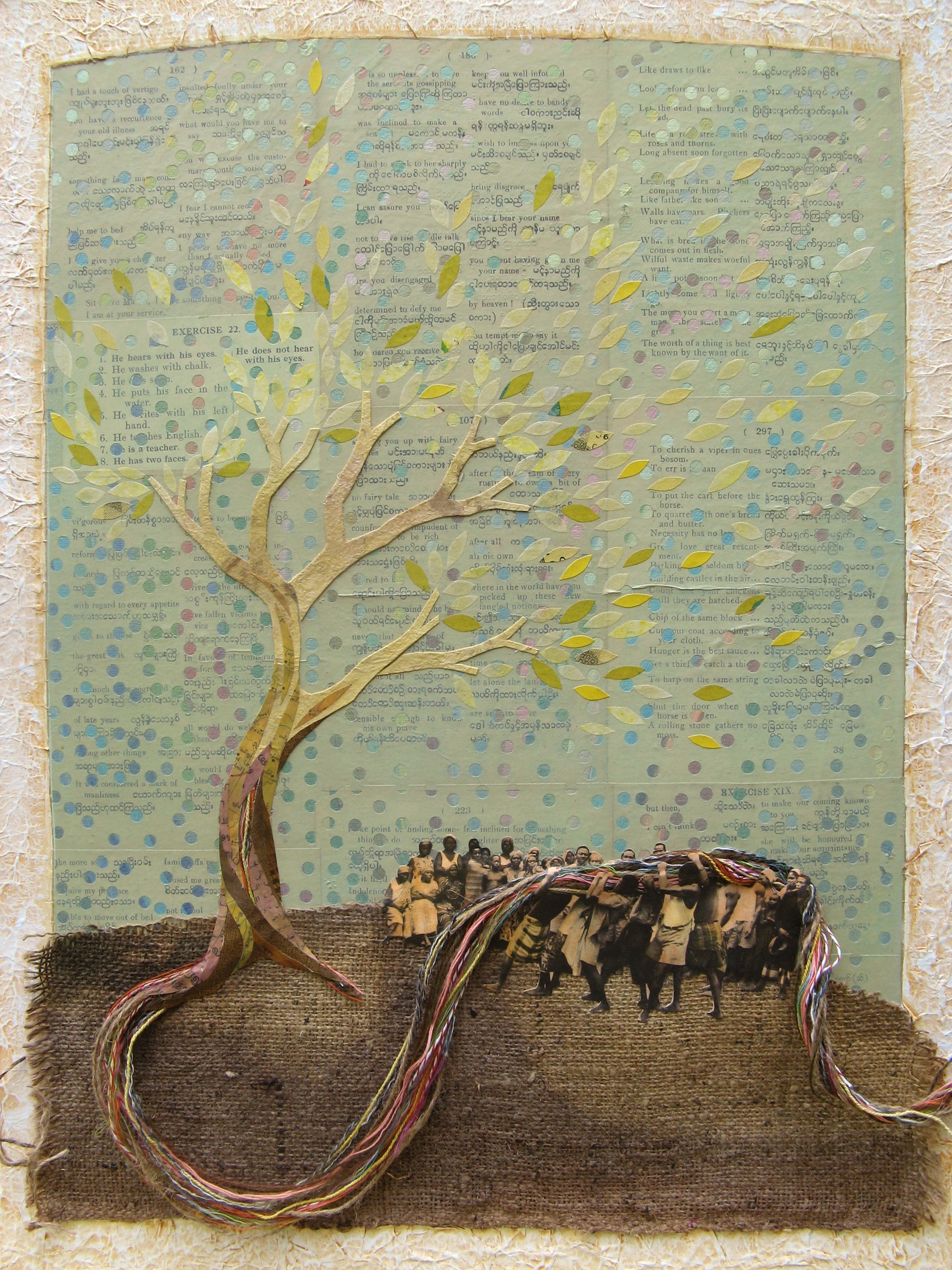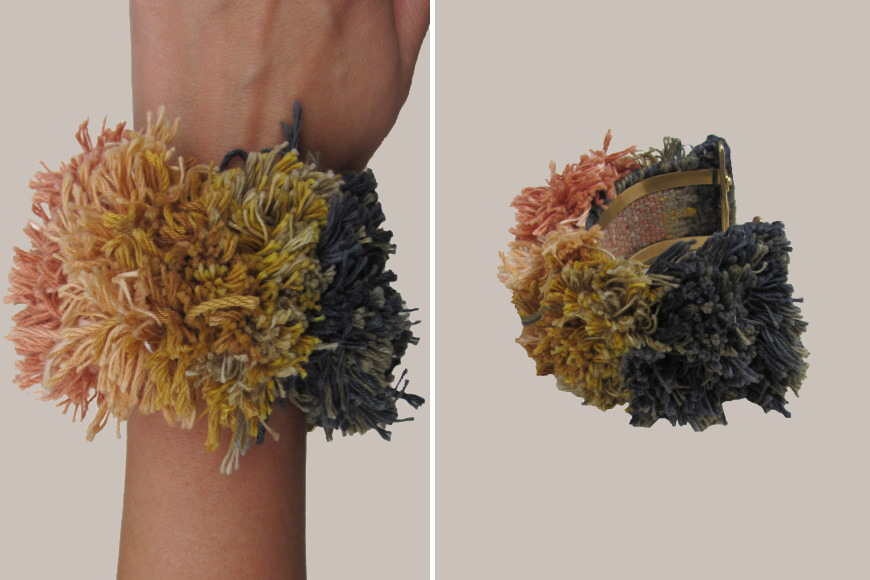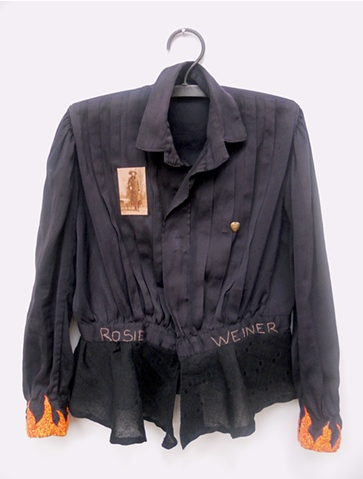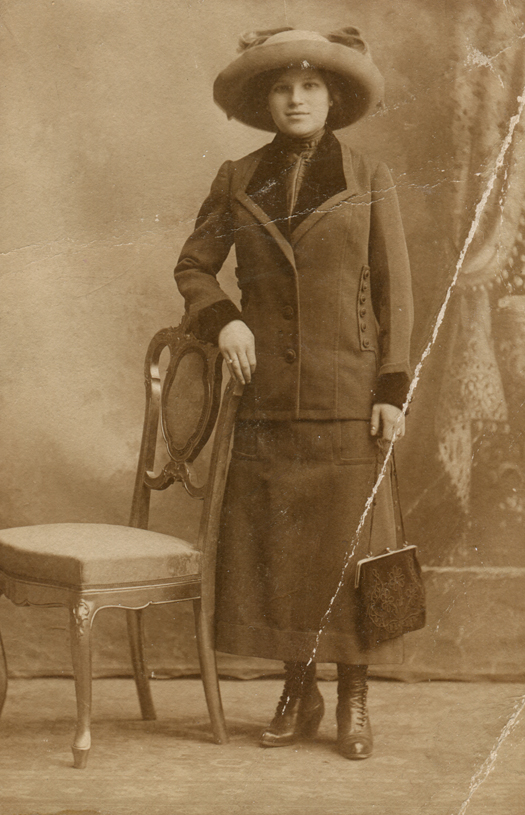Curatorial Projects
GOOD WORK
A May Day celebration of the makers and making of textiles
April 29 - June 12, 2011
Participating artists/makers: Abigail Doan, Atefeh Khas, Belinda Smith, Charlene Lam, El Hombre Sobre la Tierra in collaboration with Global Goods Partners and Via Nativa, Erica Harris, Erin Considine, Hillary Steel, Jill Magi, Maya Valladares, Michele Pred, and Susan Weltman
Textiles and social justice have always been intertwined. During the industrial revolution the Luddites smashed power looms to protest the deskilling and commodification of their labor. In the early twentieth century Mahatma Gandhi promoted Khadi (homespun cloth) in his efforts to unify India and wrestle back economic power from the British who were then flooding India with cheap cloth. In the US, garment workers organized into the International Ladies’ Garment Workers’ Union (ILGWU), the United Garment Workers, and the Amalgamated Clothing Workers of America (ACWA), fighting for and winning minimum wages, safer working conditions and the right to organize.
Today, in the context of economic liberalization, privatization and the feminization of labor, capitalists still elude the rights of workers by scouring the globe to hire those most vulnerable and marginalized. Meanwhile, private sector marketing and our governments encourage us to understand consumption as economic responsibility and national duty. In shaping our identities as first world consumers, we are told that consumption is a form of democratic, free, creative expression. This has even carried over to recent activism that advocates shopping our way to a better world.
The artists in this show use their and our textile labor to oppose the deskilling of labor, and to reject the imagined spilt between producing bodies and consuming bodies. The pieces included in GOOD WORK demonstrate the multiplicity of ways fiber art and textile craft engage the craft and politics of labor, from the domestic sphere to global trade. Yet in their diversity, two themes run consistently throughout these works: valuing the skill of handwork/the hands that work, and a connection to labor/laborers otherwise imagined as distant in space or time. In these themes, the meaning and purpose of May Day emerges. Without romanticizing handwork, the artists/makers featured here forge connections and reclaim our abilities as producers—of material goods and of a more just world.
